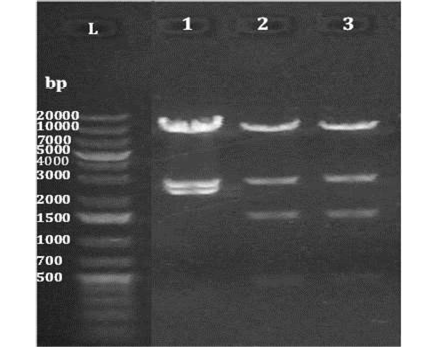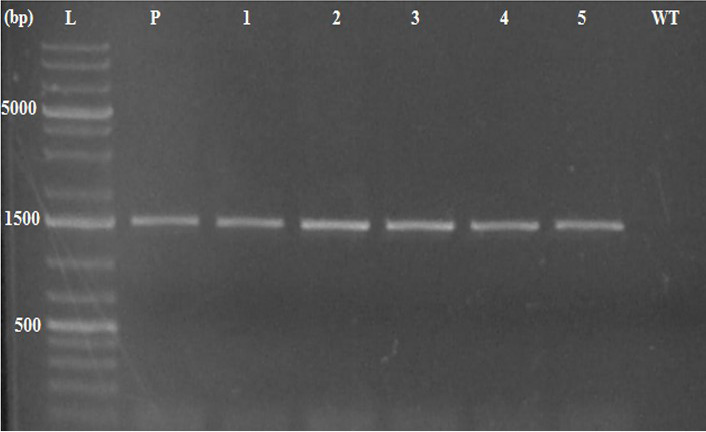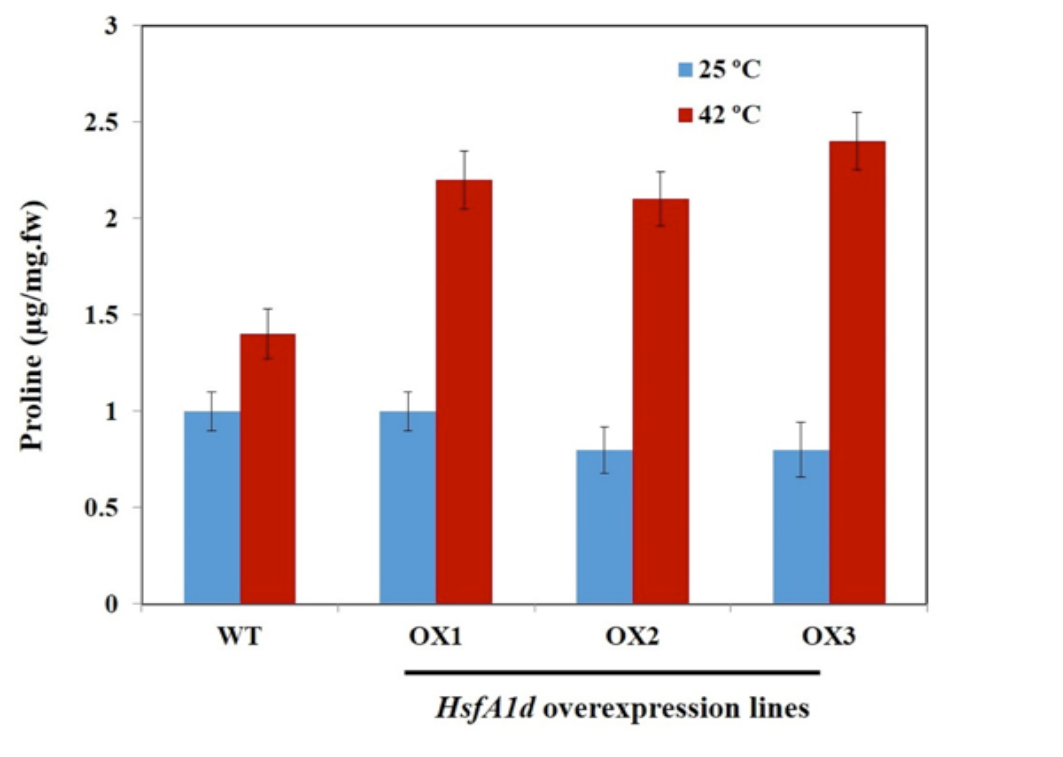Overexpression of the Heat Shock-Specific Transcription Factor HSFA1D Enhances Thermotolerance in Tobacco Plants
Overexpression of the Heat Shock-Specific Transcription Factor HSFA1D Enhances Thermotolerance in Tobacco Plants
Zamarud Shah, Safdar Hussain Shah, Asad Jan and Gul Shad Ali
Restriction digestion of cloned plant expression vector pGWB442-HsfA1d along with their empty control pGWB442, using enzyme NcoI. L, 1kb plus DNA ladder; 1, pGWB442; 2, pGWB442-HsfA1d; 3, pGWB442-HsfA1d
Diagrammatic representation of pGWB442-HsfA1d vector.
CaMV35S= promotor; nptII= Plant selectable marker; neomycin phosphotransferase= Bacterial selectable marker: YFP= yellow florescent proteins, HsfA1d= Gene of interest
Different phases of invitro tobacco plant regeneration and establishment in soil. A, Swelling of leaf discs; B, Callus formation; C, Shoot development; D, Root formation; E, Establishment in soil; F, Flower production
Expression of yellow florescent proteins in transgenic plants. 1 to 5, Five independent transgenic plant expressing YFP, cloned in frame with HsfA1d; WT, Wild type
PCR based amplification of genomic DNA extracted from transgenic plants along with control using HsfA1d specific primers. L, 1kb plus DNA ladder; P, positive control; Lane 1 to 5, PCR amplification of genomic DNA extracted from 5 independent transgenic lines with HsfA1d primers; WT, Wild type
Effect of heat treatment on electrolyte leakage of HsfA1d overexpression lines, WT= Wild type
Effect of heat treatment on Chlorophyll content of HsfA1d overexpression lines (OX1, OX2 and OX3), WT= Wild type
Effect of heat treatment on Relative water content of HsfA1d overexpression lines (OX1, OX2 and OX3), WT= Wild type
Effect of heat treatment on Proline content of overexpression lines (OX1, OX2 and OX3), WT= Wild type
















